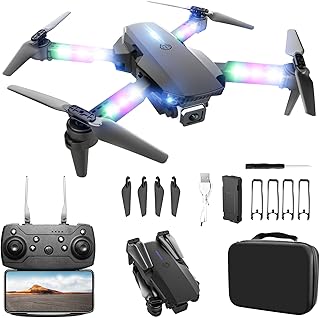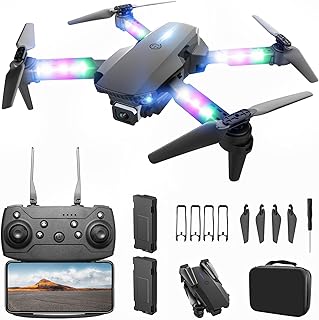BEZGAR Drone: Safety Tips and Best Practices for Flying
Before taking to the skies with your BEZGAR drone, it's essential to prioritize safety and follow best practices to ensure a positive and responsible flying experience. Here's a comprehensive guide:
1. Know the Laws and Regulations:
* FAA Regulations (USA): Register your drone with the FAA, obtain a Remote Pilot Certificate (if necessary), and adhere to their airspace regulations.
* Local Laws: Check for any local laws or ordinances governing drone operation in your area, including designated no-fly zones, flight restrictions, and noise regulations.
* International Regulations: Familiarize yourself with drone laws in the country you're flying in, as they may differ from the US.
2. Safety Equipment and Precautions:
* Propeller Guards: Use propeller guards to protect yourself and others from the spinning blades.
* Battery Safety: Use only BEZGAR-approved batteries and charge them in a safe, fire-resistant area.
* Weather Considerations: Fly in clear, calm weather with good visibility. Avoid strong winds, rain, snow, or fog.
* Visibility and Awareness: Maintain line-of-sight with your drone at all times. Be aware of your surroundings and avoid flying near power lines, airports, or crowded areas.
3. Before Taking Off:
* Drone Inspection: Inspect your drone for any damage or loose components before each flight.
* Flight Planning: Plan your flight path and consider potential hazards like obstacles, buildings, and people.
* Battery Charge: Ensure your battery is fully charged and has enough power for your planned flight duration.
* Flight Modes: Understand your drone's different flight modes and select the appropriate setting for your flight.
4. During Flight:
* Maintain Control: Always keep your drone within your line of sight and maintain control at all times.
* Respect Privacy: Avoid flying over private property or recording people without their consent.
* Stay Below 400 Feet: The FAA generally allows drones to fly up to 400 feet above ground level, but check local regulations.
* Emergency Landing: Be prepared to execute an emergency landing in case of technical issues or loss of control.
5. After Landing:
* Drone Storage: Store your drone in a safe, dry place when not in use.
* Battery Care: Store batteries in a cool, dry place and recharge them after each flight.
* Data Management: Back up your flight data and photos regularly, and store them securely.
6. Additional Tips:
* Practice Regularly: Familiarize yourself with your drone's capabilities and controls through regular practice flights.
* Join a Drone Community: Connect with other drone enthusiasts to learn from their experience, share tips, and stay updated on regulations.
* Responsible Use: Fly your drone responsibly, respecting others and avoiding any illegal or unethical activities.
Remember: Your responsibility as a drone pilot is to fly safely and legally, ensuring the well-being of yourself, others, and the environment.


